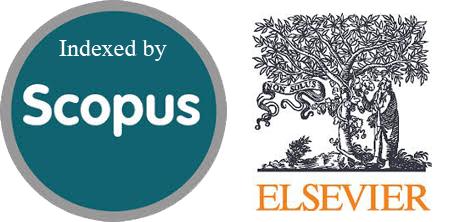Distribution of Lymphoma Cases and Significance of Diagnostic Immunohistochemistry in a Sample of Iraqi Patients: A Cross-Sectional Study in a Tertiary Center in Baghdad
DOI:
https://doi.org/10.54133/ajms.v8i2.1960Keywords:
Baghdad, Hodgkin’s lymphoma, non-Hodgkin’s lymphoma, SubtypesAbstract
Background: The epidemiological patterns of lymphomas vary regionally, but studies in Baghdad, Iraq’s largest population center, remain limited. Objective: To evaluate the prevalence, subtype, and demographics of lymphomas in one of the major centers in Baghdad. Methods: This cross-sectional study evaluated lymphoma prevalence, subtypes, and demographics at the National Center of Teaching Laboratories, Baghdad (June 2022–January 2024) using archival histopathology data confirmed by immunohistochemistry (IHC). Results: 50 cases with complete data were included (41.84±20.4 years). Hodgkin’s lymphoma constituted 20 (40%) of all cases, while 30 (60%) were non-Hodgkin’s lymphoma. Non-Hodgkin’s lymphoma patients were significantly older than those with Hodgkin’s lymphoma (31±15.75 vs. 48.8±20.4 years). Male predominance was seen in both types of lymphoma, with male-to-female ratios of 1.3:1 in non-Hodgkin’s lymphoma and 1.2:1 in Hodgkin’s lymphoma. Classical Hodgkin’s lymphoma comprised 95% of the cases, with nodular sclerosis being the predominant subtype (65%), followed by mixed cellularity (25%). Reed-Sternberg cell markers CD15 and CD30 were positive in 94.7% and 100% of classical Hodgkin’s lymphoma cases. B-cell lymphomas represented 83.3% of non-Hodgkin’s lymphoma cases, with diffuse large B-cell lymphoma being the most common subtype (40%), followed by small lymphocytic lymphoma (28%). Conclusions: In Baghdad, there is a higher prevalence of HL than the global average and regional variation in subtype distribution. Small lymphocytic lymphoma rates are relatively high; however, diffuse large B cell lymphoma is the most common non-Hodgkin’s lymphoma subtype. These findings emphasize the need for region-specific epidemiological research to improve diagnosis, treatment, and patient outcomes.
Downloads
References
Jamil A, Mukkamalla SK, (Eds.), Lymphoma. Treasure Island: StatPearls Publishing; 2023. PMID: 32809661.
Huh J. Epidemiologic overview of malignant lymphoma. Korean J Hematol. 2012;47(2):92. doi: 10.5045/kjh.2012.47.2.92. DOI: https://doi.org/10.5045/kjh.2012.47.2.92
Bray F, Laversanne M, Sung H, Ferlay J, Siegel RL, Soerjomataram I, et al. Global cancer statistics 2022: GLOBOCAN estimates of incidence and mortality worldwide for 36 cancers in 185 countries. Cancer J Clinicians. 2024;74(3):229-263. doi: 10.3322/caac.21834. DOI: https://doi.org/10.3322/caac.21834
Ministry of Health and Environment, Iraqi Cancer Board. Annual Report Baghdad; 2022. Available at: https://storage.moh.gov.iq/2024/03/31/2024_03_31_11983087032_3940351786864953.pdf
Jaffe ES, Barr PM, Smith SM. Understanding the new WHO classification of lymphoid malignancies: Why it's important and how it will affect practice. Am Soc Clin Oncol Educ Book. 2017;37:535-546. doi: 10.14694/EDBK_175437. DOI: https://doi.org/10.1200/EDBK_175437
Perry AM, Jacques D, Nathwani BN, Maclennan KA, Müller-Hermelink HK, Boilesen E, et al. Classification of non-Hodgkin lymphoma in seven geographic regions around the World: Review of 4539 cases from the international non-Hodgkin lymphoma classification project. Blood. 2015;126(23):1484. doi: 10.1182/blood.V126.23.1484.1484. DOI: https://doi.org/10.1182/blood.V126.23.1484.1484
Di M, Olszewski AJ. Geographic variation in the incidence of marginal zone lymphoma subtypes and infectious risk factors in the United States. Blood. 2019;134:4012. doi: 10.1182/blood-2019-122361. DOI: https://doi.org/10.1182/blood-2019-122361
Al-Ansari RY, Aljarah NM, Alofi GM, Shaigah FAA, Al-Qahtany FH, Jebakumar AZ, et al. Incidence of lymphoma among adult patients in the Eastern Province of Saudi Arabia – A single-center study. J Appl Hematol. 2023;14(3). doi: 10.4103/joah.joah_50_23. DOI: https://doi.org/10.4103/joah.joah_50_23
Turner JJ, Morton LM, Linet MS, Clarke CA, Kadin ME, Vajdic CM, et al. InterLymph hierarchical classification of lymphoid neoplasms for epidemiologic research based on the WHO classification (2008): update and future directions. Blood. 2010;116(20):e90-e98. doi 10.1182/blood-2010-06-289561. DOI: https://doi.org/10.1182/blood-2010-06-289561
Nielsen C, Jerkeman M, Jöud AS. Tattoos as a risk factor for malignant lymphoma: a population-based case–control study. eClinicalMedicine. 2024;72:102649. doi: 10.1016/j.eclinm.2024.102649. DOI: https://doi.org/10.1016/j.eclinm.2024.102649
Yaqo RT, Hughson MD, Sulayvani FK, Al-Allawi NA. Malignant lymphoma in northern Iraq: A retrospective analysis of 270 cases according to the World Health Organization classification. Indian J Cancer. 2011;48(4). doi: 10.4103/0019-509X.92276. DOI: https://doi.org/10.4103/0019-509X.92276
Ghazi HAA, Al-Taee RAM, Al-Hindy HA. Immunophenotypic characterization of malignant lymphoma in Iraqi patients using immunohistochemical CD-marker study. Syst Rev Pharmacy. 2020;11(11):412-417. doi: 10.31838/srp.2020.11.62.
Mjali A, Oudah AH, Al-Shammari HH, Abbas NT. Classification of non-Hodgkin lymphoma in the Middle Euphrates region of Iraq according to the World Health Organization classification. Iraqi J Hematol. 2021;10(2):170-5. doi: 10.4103/ijh.ijh_34_21. DOI: https://doi.org/10.4103/ijh.ijh_34_21
Sun K, Wu H, Zhu Q, Gu K, Wei H, Wang S, et al. Global landscape and trends in lifetime risks of haematologic malignancies in 185 countries: population-based estimates from GLOBOCAN 2022. eClinicalMedicine. 2025;83:103193. doi: 10.1016/j.eclinm.2025.103193. DOI: https://doi.org/10.1016/j.eclinm.2025.103193
Kundu R, Kal N, Singh A, Jagadeesh D. Global incidence, mortality and risk factors of hodgkins and non-Hodgkins lymphoma 1990-2021: A global health data study. Blood. 2024;144(Supplement 1):6360. doi: 10.1182/blood-2024-212117. DOI: https://doi.org/10.1182/blood-2024-212117
Kaseb H, Babiker HM, (Eds.), Hodgkin Lymphoma. 2023 Jun 26. In: StatPearls [Internet]. Treasure Island (FL): StatPearls Publishing; 2025 Jan. PMID: 29763144.
Alhilfi HSQ, Ahmed SM, Alhashimi OTM. Nasopharyngeal carcinoma in South of Iraq: A retrospective study. Prensa Med Argent. 2020;106:1. DOI: https://doi.org/10.47275/0032-745X-175
Aladily TN, Khreisat W, Ashukhaibi O, Alkhatib SM, Annab H, Tarawneh MS, et al. The epidemiology of lymphoma in Jordan: A nationwide population study of 4189 cases according to World Health Organization classification system. Hematol Oncol Stem Cell Ther. 2021;14(4):336-342. doi: 10.1016/j.hemonc.2020.10.002. DOI: https://doi.org/10.1016/j.hemonc.2020.10.002
Aljufairi EA, George SM, Alshaikh SA, Radhi AA, Mohamed RM. Spectrum of lymphoma in Bahrain: A retrospective analysis according to the World Health Organization classification. Saudi Med J. 2018;39(7):736. doi: 10.15537/smj.2018.7.23065. DOI: https://doi.org/10.15537/smj.2018.7.23065
Jaffe ES, Arber DA, Campo E, Quintanilla-Fend, Orazi L. Lymphoid Neoplasms. In: Connors J, (editor), Hematopathology, (2nd ed.), Philadelphia: Elsevier; 2017.
Sedeta E, Ilerhunmwuwa N, Wasifuddin M, Uche I, Hakobyan N, Perry J, et al. Epidemiology of non-Hodgkin lymphoma: Global patterns of incidence, mortality, and trends. Blood. 2022;140(Suppl 1):5234-5235. doi: 10.1182/blood-2022-158830. DOI: https://doi.org/10.1182/blood-2022-158830
Johnson PC, Bailey A, Ma Q, Milloy N, Butcher J, Sanderson I, et al. Real-world evaluation of health-related quality of life in patients with diffuse large B-cell lymphoma based on a multinational survey. Front Oncol. 2024;14:1402992. doi: 10.3389/fonc.2024.1402992. DOI: https://doi.org/10.3389/fonc.2024.1402992
Wang SS. Epidemiology and etiology of diffuse large B-cell lymphoma. Semin Hematol. 2023;60(5):255-266. doi: 10.1053/j.seminhematol.2023.11.004. DOI: https://doi.org/10.1053/j.seminhematol.2023.11.004
Ghorra C, Rassy M, Naderi S, Kourie H, Kattan J. Type distribution of lymphomas in Lebanon: Five-year single institution experience. Asian Pac J Cancer Prevent. 2014;15:5825-5828. doi: 10.7314/apjcp.2014.15.14.5825. DOI: https://doi.org/10.7314/APJCP.2014.15.14.5825
Ekmen MÖ, Dal S, Karakuş A, Büyükbayram H, Ayyıldız MO. Classification of non-Hodgkin lymphoma in Southeast Turkey: A review of 550 cases. Harran Üniversitesi Tıp Fakültesi Dergisi. 2019;16(3):556-561. doi: 10.35440/hutfd.627797. DOI: https://doi.org/10.35440/hutfd.627797
Alyahya N, Adiga B, Alwadei A, Alshahrani G, Alyahya F. The clinico-pathological profile of non-Hodgkin’s lymphoma in Aseer region of Saudi Arabia. BMC Res Notes. 2019;12:1-7. doi: 10.1186/s13104-019-4447-1. DOI: https://doi.org/10.1186/s13104-019-4447-1
Özgür T, Yaldiz M, Kaya H, Yengil E, Toprak S. Descriptive epidemiology of non-Hodgkin's lymphomas in Hatay. Eastern J Med. 2013;18(4):181.
Huang J, Chan SC, Lok V, Zhang L, Lucero-Prisno DE, Xu W, et al. Global burden, risk factors, and trends of non-Hodgkin lymphoma: A worldwide analysis of cancer registries. Cancer Med. 2024;13(5):e7056. doi: 10.1002/cam4.7056. DOI: https://doi.org/10.1002/cam4.7056
Aourarh B, Boularab J, Belkouchi L, Aourarh A, Edderai M. High grade Burkitt lymphoma in an immunocompetent young patient: Concomitant gastric and ileal localizations. Radiol Case Rep. 2024;19(5):1836-1838. doi: 10.1016/j.radcr.2024.01.077. DOI: https://doi.org/10.1016/j.radcr.2024.01.077
Dozzo M, Carobolante F, Donisi PM, Scattolin A, Maino E, Sancetta R, et al. Burkitt lymphoma in adolescents and young adults: management challenges. Adolesc Health Med Ther. 2016:11-29. doi: 10.2147/AHMT.S94170. DOI: https://doi.org/10.2147/AHMT.S94170
Zuhair Z, Khattab KWA. The Utility of CD10 and MUM1 immunohistochemical stains in subtyping diffuse large B cell lymphoma. J Nat Sci Biol Med. 2024;15(1):51-57. doi: 10.4103/jnsbm.JNSBM_15_1_6.

Downloads
Published
How to Cite
Issue
Section
License
Copyright (c) 2025 Al-Rafidain Journal of Medical Sciences ( ISSN 2789-3219 )

This work is licensed under a Creative Commons Attribution-NonCommercial-ShareAlike 4.0 International License.
Published by Al-Rafidain University College. This is an open access journal issued under the CC BY-NC-SA 4.0 license (https://creativecommons.org/licenses/by-nc-sa/4.0/).











